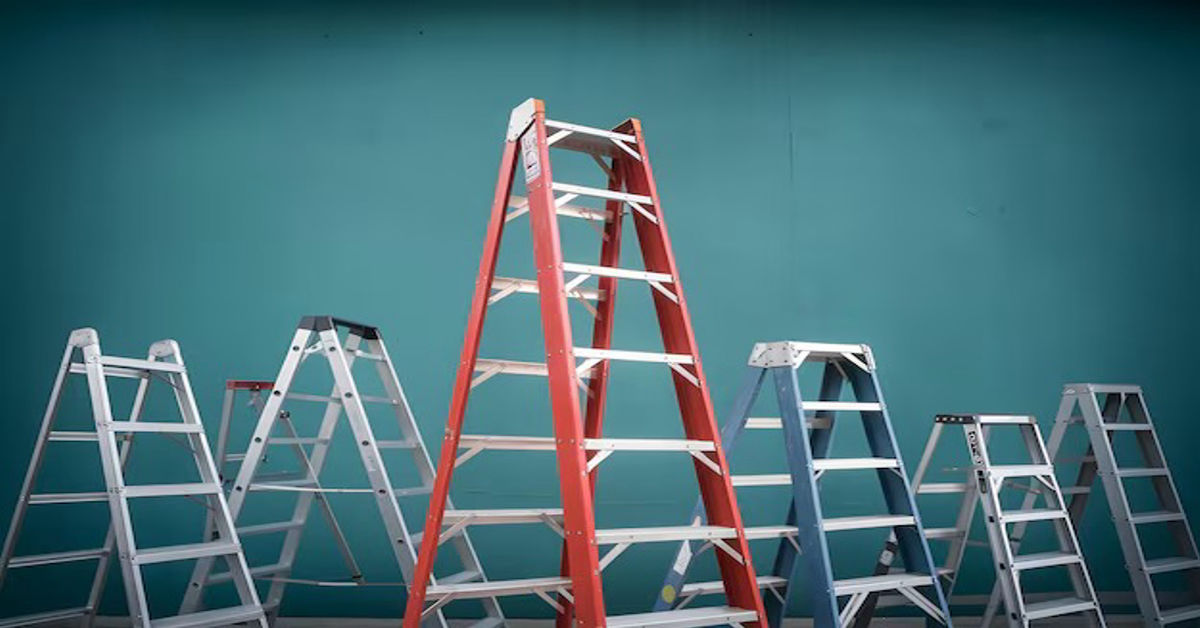Ladders are indispensable tools on construction sites, but they are also among the most frequent sources of workplace accidents—unsafe ladders, whether due to poor design, neglect, or misuse, pose significant risks. To ensure a secure working environment, construction workers, supervisors and firms must prioritise ladder inspections. This comprehensive guide highlights key requirements for ladder inspection and provides actionable insights for implementing safer practices on-site.
Understanding the Basics of Ladder Inspections
Ladder inspections are vital for preventing accidents and ensuring compliance with workplace safety standards. On construction sites, ladders experience continuous wear and tear, which may jeopardise their structural integrity. Inspections are necessary to identify visible defects and catch subtle issues that may escalate over time.
Construction workers and supervisors should undergo basic ladder inspection training to conduct adequate inspections. This training provides the technical know-how needed to assess ladders accurately. It includes learning how to identify potential hazards such as loose fittings, weakened structural components, or improper repairs. Importantly, it also focuses on recognising when a ladder should be removed from service entirely.
This proactive measure reduces liability and ensures ladders comply with regulations. Such training helps workers feel confident in identifying issues before they become risks, this promotes a culture of accountability and safety at construction sites.
Materials and Design Standards
The choice of material and design directly influences a ladder’s performance, durability and safety. Construction ladders are typically made from aluminium, fibreglass, or wood, with each material offering distinct advantages and limitations.
- Aluminium Ladders: Lightweight and rust-resistant, they are ideal for general use but conduct electricity, making them unsuitable for electrical tasks.
- Fibreglass Ladders: Known for their strength and non-conductive properties, these are preferred for electrical and heavy-duty work. However, they are heavier and more expensive than aluminium.
- Wooden Ladders: Although nonconductive and cost-effective, wooden ladders are prone to warping, rotting and splintering, especially in damp conditions.
When inspecting a ladder, ensure it adheres to British Standards, such as BS EN 131. These standards offer guidelines for the design, dimensions and performance criteria of portable ladders. Features like anti-slip feet, evenly spaced rungs and secure locking mechanisms are essential for meeting these standards. If a ladder deviates from these specifications, it may be unfit for use on construction sites.
Physical Condition and Maintenance Checks
A ladder’s physical condition is a clear indicator of its safety. Inspections should thoroughly assess the entire structure for damage, wear, or irregularities that could compromise its function.
- Check for Damage: Inspect the rungs, rails and feet for cracks, bends, or corrosion. Loose or missing rivets, bolts, or screws are signs of structural instability.
- Inspect for Environmental Wear: Metal ladders may suffer from rust, especially in wet conditions, while wooden ladders are vulnerable to rot. Fibreglass ladders can develop cracks or splinters over time.
- Look for Alterations: Modified or repaired ladders, such as those with taped joints or missing components, should be flagged as unsafe.
Regular maintenance is crucial to prolong a ladder’s lifespan and maintain safety. They must also be stored in a dry, ventilated area away from extreme temperatures or moisture. The Health and Safety Executive (HSE) recommends documenting inspections and maintenance activities to create a clear record of each ladder’s condition and usage history.
Stability and Load Requirements
Stability is a fundamental aspect of ladder safety. A stable ladder reduces the risk of falls and accidents, which are common causes of workplace injuries.
When inspecting a ladder, confirm that it sits firmly on the ground without wobbling. Uneven or slippery surfaces can cause instability, so additional stabilising devices, such as anti-slip mats or stabiliser bars, may be necessary. The ladder’s locking mechanisms should engage fully to prevent it from collapsing during use.
Every ladder has a maximum load rating, including the user’s weight and the tools and materials being carried. Using a ladder beyond its capacity can result in structural failure. Construction firms should evaluate the specific tasks being performed and select ladders that are appropriately rated for those jobs. Ensuring that ladders are suited to the site conditions and functions is essential for preventing overloading and accidents.
The Role of Training in Promoting Ladder Safety
Ladder-related risks are a common hazard on construction sites, making proper safety measures essential for both workers and supervisors. Equipping teams with the knowledge to manage these risks is crucial for maintaining workplace safety and compliance.
Participating in health and safety courses offers valuabletraining on conducting site-specific hazard evaluations, selecting the right ladder for each task, and adopting safe practices when working at height. These courses also address ladder safety within the broader framework of workplace safety, providing a comprehensive approach to reducing risks.
Importantly, the training aligns with UK regulations, including the Work at Height Regulations 2005, which require employers to evaluate risks and ensure safe equipment use.
Conclusion
Ladder safety is a shared responsibility on construction sites, requiring vigilance and collaboration among workers, supervisors and firms. Regular inspections are the first line of defence against accidents, helping to identify and address potential hazards before they escalate. Understanding materials, design standards and stability requirements ensures that ladders used on-site meet safety criteria.
Adhere to these practices and UK regulations and construction teams can significantly reduce risks, protect their workforce and maintain efficient project operations. Prioritising ladder safety is not just about compliance; it’s about creating a work environment where everyone can perform their tasks confidently and safely.







